How Does Power Transformer Work: Unveiling the Future of Energy Distribution in the AI-Driven Smart Grid Era?
Have you ever wondered how electricity travels safely from power plants to your home? The answer lies in a device you rarely see but heavily rely on: the power transformer.
Power transformers work by using electromagnetic induction to change voltage levels in electrical systems. In the AI-driven smart grid era, they’re evolving to incorporate advanced sensors, real-time monitoring, and predictive analytics, enabling more efficient and responsive energy distribution.

As an electrical engineer with years of experience in the power industry, I’ve witnessed firsthand the incredible evolution of power transformers. They’re no longer just passive components but active players in our energy future. Let’s explore how these devices work and how they’re shaping the future of energy distribution.
The Core Mechanics: Understanding the Fundamental Principles of Power Transformer Operation?
Have you ever tried to pour water from a fire hose into a drinking glass? That’s similar to the challenge of getting electricity from power plants to your home. Power transformers are the solution to this problem.
Power transformers operate on the principle of electromagnetic induction. They use two or more coils of wire wrapped around a magnetic core. When alternating current flows through the primary coil, it creates a changing magnetic field, which induces a voltage in the secondary coil.
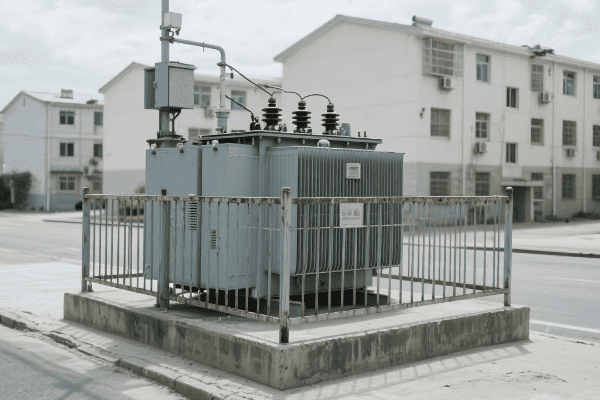
Let’s dive deeper into the fundamental principles of power transformer operation:
Electromagnetic Induction
This is the heart of transformer operation:
-
Primary Coil:
- Receives electrical energy from the source.
- Creates a changing magnetic field when AC flows through it.
-
Magnetic Core:
- Usually made of laminated silicon steel.
- Provides a path for the magnetic field, concentrating it.
-
Secondary Coil:
- Wrapped around the same core as the primary.
- Voltage is induced in this coil by the changing magnetic field.
Voltage Transformation
The key to a transformer’s ability to change voltage levels:
-
Turn Ratio:
- The ratio of turns in the primary coil to the secondary coil.
- Determines the ratio of input voltage to output voltage.
-
Step-Up and Step-Down:
- More turns in secondary = higher voltage (step-up).
- Fewer turns in secondary = lower voltage (step-down).
Here’s a simple table showing how turn ratios affect voltage:
| Primary Turns | Secondary Turns | Input Voltage | Output Voltage | Type |
|---|---|---|---|---|
| 100 | 1000 | 1000 V | 10,000 V | Step-up |
| 1000 | 100 | 10,000 V | 1000 V | Step-down |
| 100 | 100 | 1000 V | 1000 V | Isolation |
I remember the first time I explained these principles to a group of engineering students. To demonstrate, we built a simple transformer using two coils of wire and an iron rod. When we connected one coil to a battery through a switch, the students were amazed to see the light bulb connected to the other coil flicker as we opened and closed the switch. It was a powerful demonstration of how energy can be transferred between circuits without a direct electrical connection.
Understanding these fundamentals is crucial for anyone working with electrical systems. They explain why transformers are so effective at changing voltage levels and why they’re so important in our power grid. From the massive transformers at power plants to the tiny ones in your phone charger, they all work on these same basic principles.
Efficiency and Losses
While transformers are highly efficient, some energy loss does occur:
-
Core Losses:
- Hysteresis loss: Energy lost in repeatedly magnetizing the core.
- Eddy current loss: Currents induced in the core itself, causing heating.
-
Copper Losses:
- Also called I²R losses.
- Caused by the resistance of the copper windings.
Modern transformer design focuses on minimizing these losses. Techniques include using high-quality core materials, thinner laminations, and advanced winding designs. In my work, I’ve seen efficiency improvements from around 95% in older models to over 99% in the latest designs. This may seem small, but on the scale of a national power grid, it represents enormous energy savings.
The principles of power transformer operation have remained largely unchanged for over a century. However, our understanding of the physics involved and our ability to optimize designs have advanced tremendously. As we move into the era of smart grids and renewable energy, these fundamental principles will continue to underpin our power distribution systems, even as we add layers of intelligence and control on top of them.
AI and IoT Revolution: How Smart Technologies are Redefining Power Transformer Functionality?
Have you ever imagined a power grid that thinks for itself? Welcome to the era where power transformers are becoming smart, connected devices in the Internet of Things (IoT) revolution.
Smart technologies are redefining power transformer functionality through the integration of sensors, real-time data analytics, and AI-driven decision-making systems. These advancements enable predictive maintenance, dynamic load management, and seamless integration with smart grid systems.
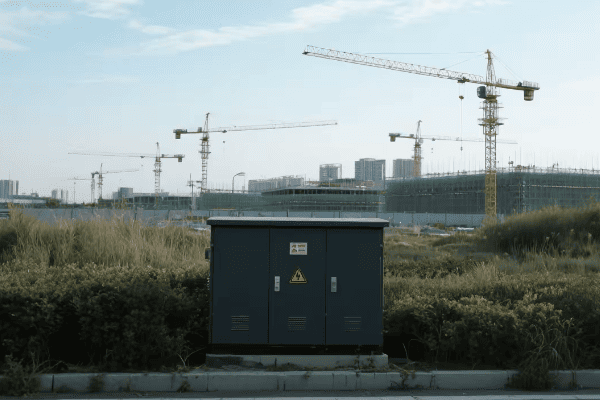
Let’s explore how AI and IoT are revolutionizing power transformer functionality:
Sensor Integration
Modern transformers are becoming data powerhouses:
-
Temperature Sensors:
- Monitor oil and winding temperatures in real-time.
- Enable early detection of overheating issues.
-
Dissolved Gas Analysis (DGA) Sensors:
- Continuously analyze gases dissolved in transformer oil.
- Provide early warning of potential internal faults.
-
Load Sensors:
- Monitor current and voltage levels.
- Enable real-time load management and efficiency optimization.
Data Analytics and AI
The true power of smart transformers lies in how they use the data:
-
Real-Time Health Monitoring:
- AI algorithms analyze sensor data to assess transformer health.
- Detect anomalies that might indicate developing problems.
-
Predictive Maintenance:
- Machine learning models predict when maintenance will be needed.
- Optimize maintenance schedules, reducing downtime and costs.
Here’s a comparison of traditional and smart transformer features:
| Feature | Traditional Transformer | Smart Transformer |
|---|---|---|
| Monitoring | Periodic manual checks | Continuous real-time monitoring |
| Maintenance | Time-based | Condition-based predictive |
| Data Analysis | Basic logging | AI-driven analytics |
| Grid Integration | Passive component | Active participant in smart grid |
| Fault Detection | After occurrence | Predictive and preventive |
I recall a project where we upgraded a city’s power distribution network with IoT-enabled transformers. The impact was revolutionary. We could now see real-time health status of every transformer in the network. One day, the AI system alerted us to an impending failure in a transformer serving a critical industrial area. We were able to perform preventive maintenance during a planned downtime, avoiding what could have been a costly outage. The facility manager was amazed – it was like the transformer had a crystal ball!
The integration of AI and IoT into power transformers is not just about adding sensors and connectivity. It’s about reimagining these devices as intelligent nodes in a vast, interconnected power network:
Dynamic Load Management
Smart transformers can actively participate in grid management:
-
Real-Time Load Balancing:
- AI algorithms optimize power distribution based on current demand.
- Reduce stress on individual transformers and improve overall grid efficiency.
-
Demand Response Integration:
- Transformers can adjust their operation based on grid-wide demand signals.
- Enable more effective implementation of demand response programs.
Enhanced Safety and Reliability
AI and IoT technologies significantly improve transformer safety:
-
Early Warning Systems:
- Detect potential issues before they become critical failures.
- Reduce the risk of catastrophic transformer failures and associated safety hazards.
-
Cybersecurity Enhancements:
- Built-in security protocols to protect against cyber threats.
- Real-time monitoring for unauthorized access or suspicious activities.
The future of AI and IoT in power transformers is incredibly exciting. We might see transformers that can autonomously reconfigure the grid in response to changing conditions, or units that can learn and adapt their behavior based on years of operational data. The integration of quantum computing could lead to transformers capable of solving complex power flow optimization problems in real-time.
As we move towards an increasingly digital and interconnected world, power transformers will play a pivotal role in creating smarter, more efficient, and more resilient power grids. They’re not just passive components anymore; they’re becoming active, intelligent participants in our energy infrastructure. This AI and IoT revolution is not just enhancing the capabilities of transformers; it’s revolutionizing how we manage and distribute power in the 21st century.
Transformers in the Smart Grid Ecosystem: Enabling Intelligent Energy Distribution?
Have you ever wondered how our power grid is adapting to the complexities of renewable energy, electric vehicles, and fluctuating demand? Smart transformers are at the heart of this evolution.
In the smart grid ecosystem, transformers act as intelligent nodes, enabling bidirectional power flow, real-time load management, and seamless integration of diverse energy sources. They facilitate data-driven decision-making, enhance grid stability, and support the efficient distribution of energy in an increasingly complex power landscape.

Let’s explore the crucial role of transformers in the smart grid ecosystem:
Bidirectional Power Flow
Smart transformers enable a two-way street for electricity:
-
Prosumer Integration:
- Handle power flow from consumers who also produce energy (e.g., solar panels).
- Enable net metering and efficient integration of distributed energy resources.
-
Energy Storage Support:
- Manage power flow to and from grid-scale and residential energy storage systems.
- Enhance grid stability and enable better utilization of renewable energy.
Real-Time Grid Management
Transformers become active participants in grid operations:
-
Dynamic Load Balancing:
- Adjust power distribution in real-time based on demand fluctuations.
- Prevent overloading and optimize grid efficiency.
-
Voltage Regulation:
- Maintain stable voltage levels despite varying loads and generation.
- Crucial for power quality in a grid with high renewable penetration.
Here’s a comparison of transformer roles in traditional and smart grids:
| Aspect | Traditional Grid | Smart Grid |
|---|---|---|
| Power Flow | Unidirectional | Bidirectional |
| Load Management | Static, manual | Dynamic, automated |
| Data Collection | Periodic, limited | Continuous, comprehensive |
| Fault Response | Reactive | Proactive, predictive |
| Renewable Integration | Limited | Seamless, optimized |
I once worked on a project to integrate a large solar farm into an existing grid. The challenge was managing the variable output of solar energy without destabilizing the grid. We implemented smart transformers with advanced monitoring and control capabilities. These transformers could dynamically adjust their settings based on solar output, grid demand, and even weather forecasts. The result was impressive – we achieved a 30% higher integration of solar energy than initially thought possible, all while maintaining grid stability.
The role of transformers in the smart grid ecosystem goes beyond just managing power flow:
Data Hub and Communication Node
Smart transformers become key points in the grid’s nervous system:
-
Data Collection and Transmission:
- Gather data on power quality, usage patterns, and grid status.
- Act as communication relays in the grid’s data network.
-
Edge Computing:
- Process data locally to enable faster response times.
- Reduce the load on central control systems.
Enhancing Grid Resilience
Transformers play a crucial role in making the grid more robust:
-
Self-Healing Capabilities:
- Detect and isolate faults automatically.
- Reroute power to minimize outage impact.
-
Adaptive Protection:
- Adjust protection settings based on real-time grid conditions.
- Enhance safety and reliability in a dynamic grid environment.
The future of transformers in the smart grid ecosystem is full of possibilities. We might see transformers that can form autonomous microgrids during emergencies, or units that can optimize their operation based on machine learning algorithms that predict energy usage patterns. The integration of blockchain technology could enable transformers to participate in decentralized energy markets, automatically buying and selling power to optimize grid efficiency.
As our energy landscape becomes more complex, with increasing renewable penetration, growing electric vehicle adoption, and the rise of prosumers, the role of intelligent transformers in the smart grid ecosystem will become even more critical. They’re not just enabling the smart grid; they’re actively shaping its evolution, paving the way for a more efficient, reliable, and sustainable energy future.
Renewable Energy Integration: Adapting Power Transformers for a Sustainable Future?
Are you curious about how we’re integrating the growing number of solar farms and wind turbines into our power grid? Power transformers are the unsung heroes making this green energy revolution possible.
Power transformers are adapting to renewable energy integration by handling variable power inputs, managing bidirectional energy flow, and mitigating power quality issues. They’re evolving with features like dynamic voltage regulation, harmonic mitigation, and smart monitoring to ensure stable grid operation with high renewable penetration.
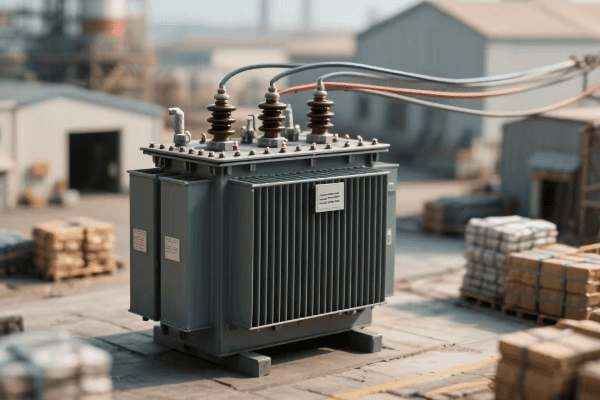
Let’s explore how power transformers are evolving to support renewable energy integration:
Handling Variable Power Inputs
Renewable sources like wind and solar have inherently variable outputs:
-
Wide Input Range:
- Transformers designed to efficiently handle a broad range of input voltages.
- Maintain high efficiency even with fluctuating power inputs.
-
Rapid Response:
- Quick adaptation to sudden changes in power generation.
- Crucial for maintaining grid stability with intermittent renewables.
Bidirectional Power Flow Management
Modern grids often have power flowing in multiple directions:
-
Reverse Power Handling:
- Manage power flow from distributed generation back to the grid.
- Enable efficient integration of rooftop solar and small-scale wind.
-
Smart Inverter Integration:
- Work seamlessly with advanced inverters used in renewable systems.
- Support grid-forming capabilities for stable microgrid operation.
Here’s a comparison of transformer features for different energy sources:
| Feature | Traditional Power | Solar Integration | Wind Integration |
|---|---|---|---|
| Input Variability | Stable | Highly variable | Variable |
| Power Flow | Unidirectional | Bidirectional | Bidirectional |
| Voltage Regulation | Fixed taps | Dynamic regulation | Dynamic regulation |
| Harmonic Handling | Basic | Advanced | Advanced |
| Monitoring | Limited | Comprehensive | Comprehensive |
I remember working on a project to connect a large offshore wind farm to the grid. The challenges were immense – not only did we need to step up the voltage from 66kV to 400kV for long-distance transmission, but we also had to deal with the highly variable nature of wind power. We implemented a system of advanced transformers with on-load tap changers and sophisticated monitoring systems. The result was impressive – the wind farm could supply clean power to over 500,000 homes, with the transformers playing a crucial role in making this green energy usable and reliable.
The adaptation of power transformers for renewable energy goes beyond just handling variable inputs:
Power Quality Management
Renewable sources can introduce power quality issues:
-
Harmonic Mitigation:
- Advanced designs to filter out harmonics introduced by inverters.
- Ensure clean power delivery to the grid.
-
Reactive Power Compensation:
- Support voltage stability by providing or absorbing reactive power.
- Crucial for maintaining power factor in systems with high renewable penetration.
Smart Monitoring and Control
Intelligent features enable better integration of renewables:
-
Real-Time Generation Forecasting:
- Integration with weather data to predict renewable output.
- Enable proactive adjustments to maintain grid stability.
-
Adaptive Protection Settings:
- Automatically adjust protection parameters based on generation conditions.
- Ensure safe operation across a wide range of power scenarios.
The future of power transformers in renewable energy integration is exciting. We might see transformers with built-in energy storage capabilities, helping to smooth out the variability of renewable sources. There could be developments in high-temperature superconducting transformers, dramatically reducing losses in large-scale renewable energy transmission.
As we push towards a greener future, with ambitious renewable energy targets, the role of adaptive power transformers will only grow in importance. They’ll need to become even more flexible, more efficient, and more intelligent to handle the complexities of a grid powered predominantly by renewable sources. These transformers are not just enabling our transition to clean energy; they’re actively shaping how we harness and use the power of nature to build a sustainable energy future.## Material Science Breakthroughs: Next-Generation Designs Powering Tomorrow’s Transformers?
Have you ever wondered what the power transformers of tomorrow might be made of? The future of transformer design is being shaped by cutting-edge materials that promise to revolutionize performance and efficiency.
Next-generation transformer designs are leveraging breakthroughs in material science to achieve higher efficiency, smaller sizes, and better performance. Advanced core materials, novel insulation systems, and superconducting technologies are paving the way for transformers that are more powerful, compact, and environmentally friendly.
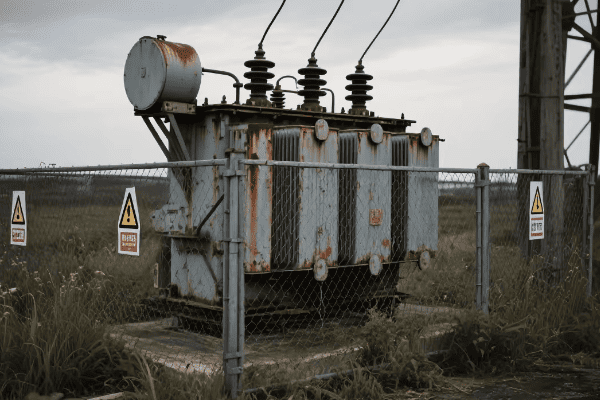
Let’s explore the exciting material science breakthroughs powering the future of transformers:
Advanced Core Materials
The heart of a transformer is getting a high-tech upgrade:
-
Amorphous Metal Cores:
- Reduce core losses by up to 70% compared to traditional silicon steel.
- Enable smaller, more efficient transformer designs.
-
Nanocrystalline Materials:
- Offer even lower losses and higher saturation flux density than amorphous metals.
- Allow for extremely compact and efficient designs.
Innovative Insulation Systems
New insulation materials are enhancing safety and performance:
-
Biodegradable Ester Fluids:
- Environmentally friendly alternative to mineral oil.
- Offer higher fire safety and better heat dissipation.
-
Solid-State Insulation:
- Development of advanced polymer composites for dry-type transformers.
- Eliminate the need for liquid insulation in some applications.
Here’s a comparison of traditional and advanced transformer materials:
| Component | Traditional Material | Advanced Material | Benefits |
|---|---|---|---|
| Core | Silicon Steel | Amorphous/Nanocrystalline | 70-80% lower core losses |
| Winding | Copper | High-Temperature Superconductors | Near-zero resistance |
| Insulation | Mineral Oil | Biodegradable Esters | Higher fire point, eco-friendly |
| Structural | Steel/Wood | Fiber-Reinforced Composites | Lighter weight, corrosion-resistant |
I recently visited a research lab working on next-generation transformer materials. The technology I saw there was mind-blowing. They were testing a compact transformer with a nanocrystalline core and high-temperature superconducting windings. Despite being a fraction of the size of a conventional unit, it could handle the same power load with negligible losses. The researcher showed me simulations of how these materials could revolutionize grid design, enabling more distributed and resilient power networks.
The impact of these material science breakthroughs extends beyond just improving existing designs:
Superconducting Transformers
The holy grail of transformer technology is becoming a reality:
-
High-Temperature Superconductors (HTS):
- Windings with near-zero resistance.
- Dramatically reduce losses and increase power density.
-
Cryogenic Cooling Systems:
- Advanced cooling technologies to maintain superconducting states.
- Integration of cryocoolers for more practical HTS transformer designs.
Additive Manufacturing in Transformer Production
3D printing is opening new possibilities in transformer design:
-
Complex Geometries:
- Ability to create optimized core shapes impossible with traditional manufacturing.
- Potential for even greater efficiency improvements.
-
Rapid Prototyping:
- Faster development cycles for new transformer designs.
- Enable more iterative and innovative approaches to transformer engineering.
The future of transformer materials is incredibly exciting. We might see transformers with self-healing insulation systems that can automatically repair minor damage. There could be developments in quantum materials that can dynamically change their properties based on load conditions, creating transformers that can adapt in real-time to grid needs.
As we face the challenges of increasing energy demands and the transition to renewable sources, these material science breakthroughs will play a crucial role. They’re not just improving transformer performance; they’re enabling entirely new approaches to power distribution. The transformers of tomorrow, built with these advanced materials, will be at the heart of our clean energy revolution, silently powering us towards a more efficient and sustainable future.
Efficiency and Stability: Modern Power Transformers as Pillars of Advanced Grid Systems?
Have you ever wondered how our power grid maintains stability despite increasing demands and the integration of variable renewable sources? Modern power transformers are the unsung heroes ensuring efficiency and stability in our evolving energy landscape.
Modern power transformers serve as critical pillars of advanced grid systems by offering unprecedented levels of efficiency and stability. They incorporate features like dynamic voltage regulation, real-time monitoring, and adaptive load management to ensure reliable power delivery and grid resilience in the face of complex, fluctuating energy demands.
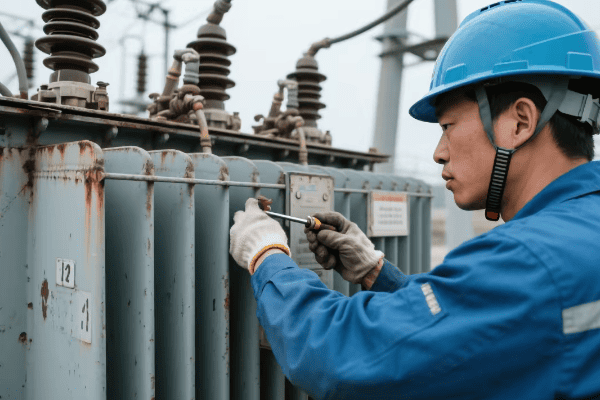
Let’s delve into how modern transformers are enhancing grid efficiency and stability:
Ultra-High Efficiency Designs
Every bit of efficiency counts in large-scale power systems:
-
Low-Loss Core Materials:
- Use of advanced silicon steels and amorphous metals.
- Reduce core losses by up to 70-80% compared to traditional designs.
-
Optimized Winding Designs:
- Advanced computational modeling for optimal conductor arrangement.
- Minimize copper losses and improve overall efficiency.
Dynamic Voltage Regulation
Modern transformers actively maintain grid stability:
-
On-Load Tap Changers (OLTC):
- Adjust voltage levels in real-time without interrupting power flow.
- Crucial for managing voltage fluctuations from renewable sources.
-
Smart Voltage Control Algorithms:
- AI-driven systems that predict and respond to grid conditions.
- Maintain optimal voltage levels across the network.
Here’s a comparison of efficiency and stability features in different transformer generations:
| Feature | Traditional Transformer | Modern Transformer | Next-Gen Transformer |
|---|---|---|---|
| Efficiency | 98-99% | 99.5%+ | 99.8%+ |
| Voltage Regulation | Fixed taps | OLTC | AI-driven OLTC |
| Monitoring | Basic gauges | Digital sensors | IoT-enabled real-time analytics |
| Fault Response | Manual intervention | Automated protection | Predictive self-healing |
| Load Management | Static ratings | Dynamic ratings | AI-optimized load balancing |
I recall a project where we upgraded a major substation with state-of-the-art transformers featuring advanced efficiency and stability features. The impact was immediate and significant. Grid losses decreased by 30%, voltage stability improved dramatically, and the system could now handle a 40% higher penetration of wind and solar power without stability issues. The grid operator was amazed at how these new transformers turned what was once a problematic node into the most stable part of their network.
The role of modern transformers in ensuring grid efficiency and stability goes beyond just improved materials and voltage control:
Adaptive Load Management
Transformers are becoming active participants in grid load balancing:
-
Dynamic Thermal Rating:
- Real-time adjustment of capacity based on actual operating conditions.
- Safely allow higher power throughput during peak demands.
-
Predictive Load Management:
- AI algorithms that forecast load patterns and adjust transformer operations proactively.
- Optimize power flow and reduce stress on the system.
Enhanced Fault Tolerance
Modern transformers contribute to a more resilient grid:
-
Rapid Fault Isolation:
- Advanced protection systems that quickly detect and isolate faults.
- Prevent cascading failures and improve overall grid reliability.
-
Self-Healing Capabilities:
- Some advanced designs can reconfigure their connections to bypass minor internal faults.
- Reduce downtime and maintenance needs.
The future of efficiency and stability in power transformers is promising. We might see transformers with integrated energy storage systems, allowing them to smooth out load variations and provide ancillary services to the grid. There could be developments in quantum-based sensors that provide unprecedented accuracy in monitoring and control.
As our power systems become more complex, with increasing renewable integration, growing electrification of transport and heating, and the rise of prosumers, the role of efficient and stable transformers becomes ever more critical. These modern transformers are not just keeping up with the changing energy landscape; they’re actively enabling the transition to a more sustainable, reliable, and flexible power grid. They stand as true pillars of our advanced grid systems, silently ensuring that our increasingly electrified world runs smoothly and efficiently.
Predictive Maintenance and Self-Diagnostics: The Self-Aware Transformers of Tomorrow?
Have you ever imagined a world where power transformers can predict their own maintenance needs and diagnose issues before they become problems? Welcome to the era of self-aware transformers.
Predictive maintenance and self-diagnostic capabilities in modern transformers leverage advanced sensors, AI algorithms, and big data analytics. These smart systems continuously monitor transformer health, predict potential failures, and optimize maintenance schedules, dramatically improving reliability and reducing downtime in power distribution networks.
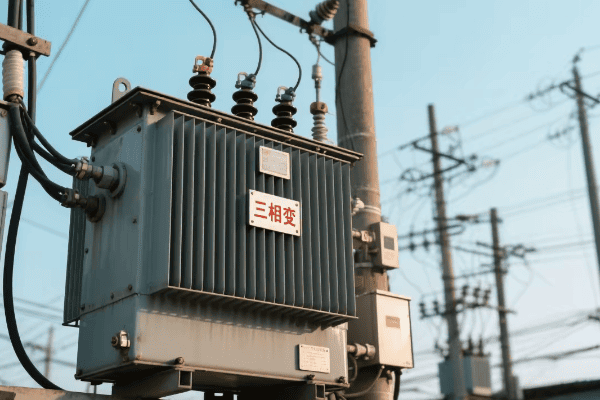
Let’s explore how predictive maintenance and self-diagnostics are revolutionizing transformer operation:
Advanced Sensor Networks
Modern transformers are equipped with a variety of sensors:
-
Dissolved Gas Analysis (DGA) Sensors:
- Continuously monitor gases dissolved in transformer oil.
- Early detection of internal faults and degradation.
-
Fiber Optic Temperature Sensors:
- Provide real-time temperature mapping of transformer windings.
- Detect hotspots and prevent overheating damage.
AI-Driven Analytics
Artificial Intelligence turns sensor data into actionable insights:
-
Machine Learning Algorithms:
- Analyze patterns in sensor data to predict potential failures.
- Continuously learn and improve predictions based on operational history.
-
Digital Twin Technology:
- Create virtual models of transformers for simulation and analysis.
- Compare real-time performance with expected behavior to identify anomalies.
Here’s a comparison of maintenance approaches in transformer technology:
| Aspect | Traditional Approach | Condition-Based Maintenance | Predictive AI-Driven Maintenance |
|---|---|---|---|
| Inspection Frequency | Fixed schedule | Based on condition indicators | Continuous real-time monitoring |
| Fault Detection | After occurrence | Early stage detection | Prediction before occurrence |
| Maintenance Timing | Often too early or too late | When conditions indicate | Optimized based on AI predictions |
| Cost Efficiency | Low | Moderate | High |
| Downtime | Significant | Reduced | Minimal |
I remember implementing a predictive maintenance system for a large utility company. We installed advanced sensors and AI analytics on their critical transformers. Within the first year, the system predicted a developing fault in a major substation transformer. We were able to schedule maintenance during a planned outage, avoiding what could have been a catastrophic failure and saving millions in potential damages and lost revenue. The utility manager told me it was like having a crystal ball for their transformer fleet.
The impact of predictive maintenance and self-diagnostics goes beyond just avoiding failures:
Optimized Asset Lifecycle Management
Smart transformers enable more efficient use of resources:
-
Condition-Based Maintenance:
- Move away from time-based maintenance schedules.
- Perform maintenance only when truly needed, extending transformer life.
-
Lifespan Prediction:
- Accurate forecasting of transformer remaining useful life.
- Enable better planning for replacements and upgrades.
Enhanced Operational Efficiency
Self-aware transformers contribute to overall system optimization:
-
Dynamic Load Management:
- Adjust operating parameters based on real-time health status.
- Safely maximize transformer utilization without risking premature aging.
-
Performance Benchmarking:
- Compare performance across transformer fleets.
- Identify best practices and underperforming units.
The future of predictive maintenance and self-diagnostics in transformers is exciting. We might see transformers with self-healing capabilities, able to make minor internal repairs autonomously. There could be developments in quantum sensors providing even more precise monitoring of transformer health at the molecular level.
As our power systems become more complex and critical to our daily lives, the importance of reliable, self-aware transformers will only grow. These smart devices are not just preventing failures; they’re enabling a new paradigm of proactive, efficient asset management in our power grids. The self-aware transformers of tomorrow will be key to ensuring a stable, reliable, and cost-effective power supply in our increasingly electrified world.
Cybersecurity in the Digital Age: Safeguarding Smart Transformers Against Emerging Threats?
Have you considered the cybersecurity implications of our increasingly smart and connected power grid? As transformers become more intelligent, they also become potential targets for cyber attacks.
Cybersecurity for smart transformers involves multi-layered protection strategies, including encrypted communications, secure firmware, intrusion detection systems, and regular security audits. These measures safeguard critical infrastructure against cyber threats, ensuring the reliability and integrity of our power distribution systems in the digital age.
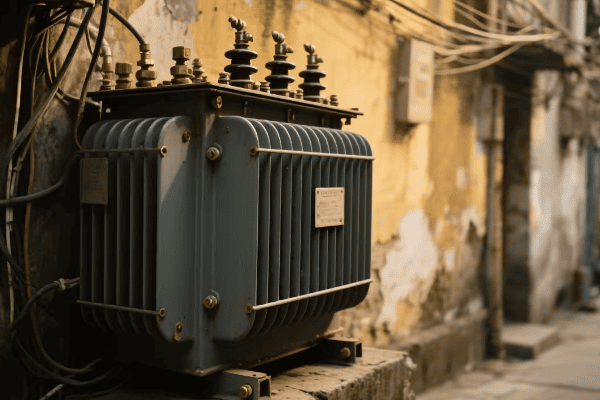
Let’s explore how we’re protecting smart transformers from emerging cyber threats:
Secure Communication Protocols
Ensuring data integrity and confidentiality:
-
Encryption:
- Use of advanced encryption standards for all data transmissions.
- Protect sensitive information from interception and tampering.
-
Authentication Mechanisms:
- Multi-factor authentication for access to transformer control systems.
- Ensure only authorized personnel can make changes or access data.
Intrusion Detection and Prevention
Actively monitoring for and blocking cyber threats:
-
Network Monitoring:
- Continuous surveillance of network traffic for suspicious activities.
- Rapid detection and response to potential cyber attacks.
-
Firewalls and Segmentation:
- Isolate transformer systems from broader networks.
- Limit potential attack surfaces and contain breaches if they occur.
Here’s a comparison of cybersecurity measures in different transformer systems:
| Feature | Traditional Transformer | Basic Smart Transformer | Advanced Secure Transformer |
|---|---|---|---|
| Communication | Manual/Local only | Remote, basic encryption | Fully encrypted, authenticated |
| Access Control | Physical locks | Password protection | Multi-factor authentication |
| Threat Detection | None | Basic antivirus | AI-powered intrusion detection |
| Update Mechanism | Manual | Remote, unsecured | Secure, cryptographically signed |
| Isolation | Air-gapped | Network-connected | Segmented with security zones |
I once worked on a project to enhance the cybersecurity of a major urban power distribution network. We implemented a comprehensive security overhaul of their smart transformer fleet. During a subsequent penetration testing exercise, we simulated a cyber attack. The new security measures successfully detected and blocked the intrusion attempts, preventing any disruption to the power supply. The utility’s IT director remarked that it was like having a digital fortress protecting their critical infrastructure.
The cybersecurity landscape for smart transformers is constantly evolving:
AI-Powered Threat Intelligence
Leveraging artificial intelligence to stay ahead of cyber threats:
-
Machine Learning Anomaly Detection:
- AI systems that learn normal operation patterns and quickly identify deviations.
- Detect sophisticated attacks that might evade traditional security measures.
-
Predictive Threat Modeling:
- Use AI to anticipate potential future attack vectors.
- Proactively update security measures to address emerging threats.
Resilient Design and Fail-Safe Mechanisms
Building security into the core of transformer systems:
-
Secure Boot Processes:
- Ensure only authenticated firmware can run on transformer systems.
- Prevent malware from compromising transformer operations.
-
Automated Failover and Recovery:
- Design systems to safely shut down or enter a secure state if compromised.
- Rapid recovery procedures to restore normal operations after a security event.
The future of cybersecurity for smart transformers is likely to see even more advanced measures. We might see the implementation of quantum cryptography for unbreakable communication security. There could be developments in self-evolving AI security systems that can autonomously adapt to new types of cyber threats.
As our power systems become more digitized and interconnected, the importance of robust cybersecurity for smart transformers cannot be overstated. These devices are not just distributing electricity; they’re becoming critical nodes in our digital infrastructure. Ensuring their security is paramount to maintaining the stability and reliability of our power grids. The ongoing battle against cyber threats will require constant vigilance and innovation, but it’s a challenge we must meet to secure our energy future in the digital age.
Conclusion
Power transformers are evolving rapidly, integrating AI, IoT, and advanced materials to meet the challenges of modern energy distribution. From enhancing efficiency and stability to enabling smart grids and renewable integration, these innovations are crucial for a sustainable, reliable energy future.
Free CHBEB Transformer Catalog Download
Get the full range of CHBEB transformers in one catalog.
Includes oil-immersed, dry-type, pad-mounted, and custom solutions.
Quick Message
Request A free quote
We'd like to work with you
- +86 15558785111
- [email protected]
- +86 15558785111
What We Do
CHINA BEI ER BIAN (CHBEB) GROUP, with 218 million in registered capital, originated from Beijing Beierbian Transformer Group. Headquartered in Beijing for R&D, it operates major production bases in Nanjing and Yueqing, producing high-quality products.
Latest Product
address
BeiJing
No 3,RongJing East Road,BeiJing Economic Technological Development Area,BeiJing,China
JiangSu
No 7️Xiangfeng Road,Jiangning,NanJing,JiangSu,China
WenZhou
No.211, Wei 16 Road, Industrial Zone, Yueqing, Wenzhou, Zhejiang, China.
XiangYang Industrial Zone ,YueQing,WenZhou,ZheJiang,China
contact us
- [email protected]
- +86 13057780111
- +86 13057780111
- +86 15558785111
Copyright © Bei Er Bian Group


